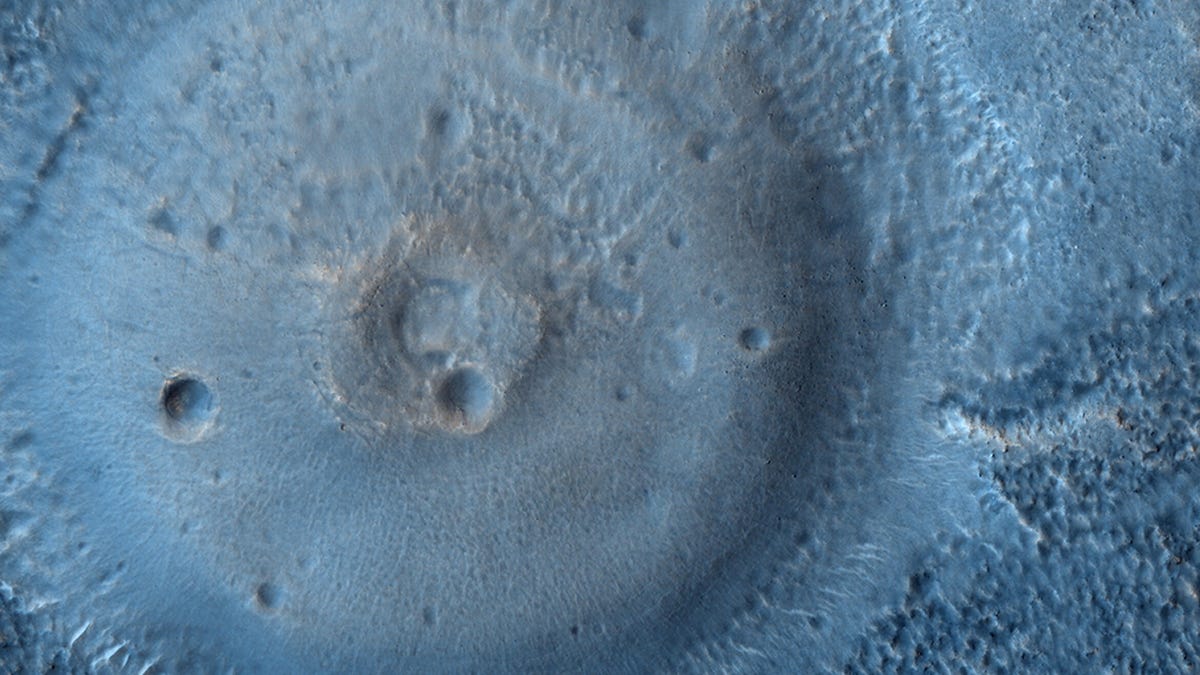Mars mud volcanoes could be creating strange lava-like flows
Mud acts really weird on the surface of the red planet.

A possible mud volcano, 100 meters across, detected by the HiRISE instrument in 2011.
The surface of Mars is full of unique, captivating features like "dragon scales" and huge footprint-shaped pits among its eye-catching structures. Scientists continue to puzzle over how some of these absurd marks might appear, with a subset attributed to volcanic eruptions that blast molten rock onto the surface and scar the planet's face with flowing structures.
But a new study suggests some of these flows may not have been created by classic volcanic activity. Instead, they were more likely built by "sedimentary volcanism" and mud volcanoes -- which sound pretty exciting, but aren't quite as dramatically explosive as their igneous cousins.
The research, published in the journal Nature Geoscience on Monday, utilized the Mars Chamber, a purpose-built vacuum chamber able to recreate Martian conditions that resembles a deep-sea submersible. The chamber was cooled to around -30 degrees Celsius (-20 degrees Fahrenheit) and the pressure lowered to replicate the thin atmosphere of Mars. The exact conditions of Mars couldn't be replicated because the Mars Chamber doesn't allow for Mars gravity to be taken into account, which could influence the results.
Once the conditions were locked in, mud was poured in and the researchers analyzed how it moved down a slope positioned inside the chamber. The mud quickly froze and started building up like soft-serve ice-cream, creating uneven, ropy piles and forming lobes. Mud volcanoes on the surface of Mars might allow a similar phenomenon to occur. A mud volcano is less a gigantic, towering structure and more like an above-ground pool, where mud has been forced from miles down.
The team also looked at how mud flows under Earth-like conditions to compare and found their experimental flows didn't freeze up and form on terrestrial surfaces, instead gushing down the slope (like melted ice-cream).
The team conclude the lava flows and mud flows on Mars may form similar structures on the surface. They have floated the notion that some of the lava-like flows may be composed of mud in the past and suggested some of the lava-like flows should be reassessed. The new evidence shows these structures on the Martian surface could be created by either cooling lava or rapidly freezing mud and line up with previous discoveries of "mud volcanoes", observed by space agencies such as NASA and ESA, which suggest subsurface fluids.
Could the mud have anything to do with the potential for life on the red planet? Well, in 2017, NASA's Curiosity rover discovered and imaged mud cracks in Gale Crater suggestive of the planet's watery past. If the flows observed are mud-based, it could point to the possibility of organic molecules necessary for life hiding beneath the Martian surface. Whether there would be living microbes underneath Mars' harsh exterior seems less likely -- but NASA will launch a new rover, Perseverance, to look for signs of life on Mars this July.

